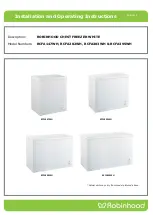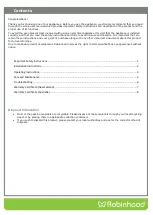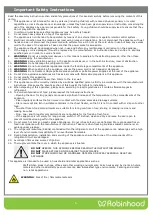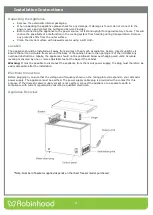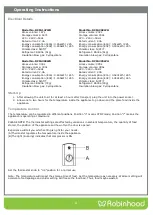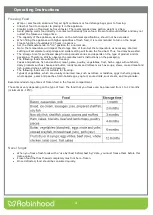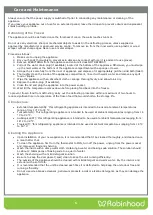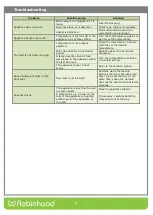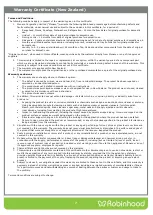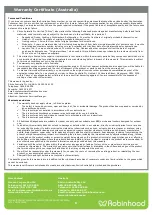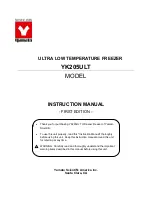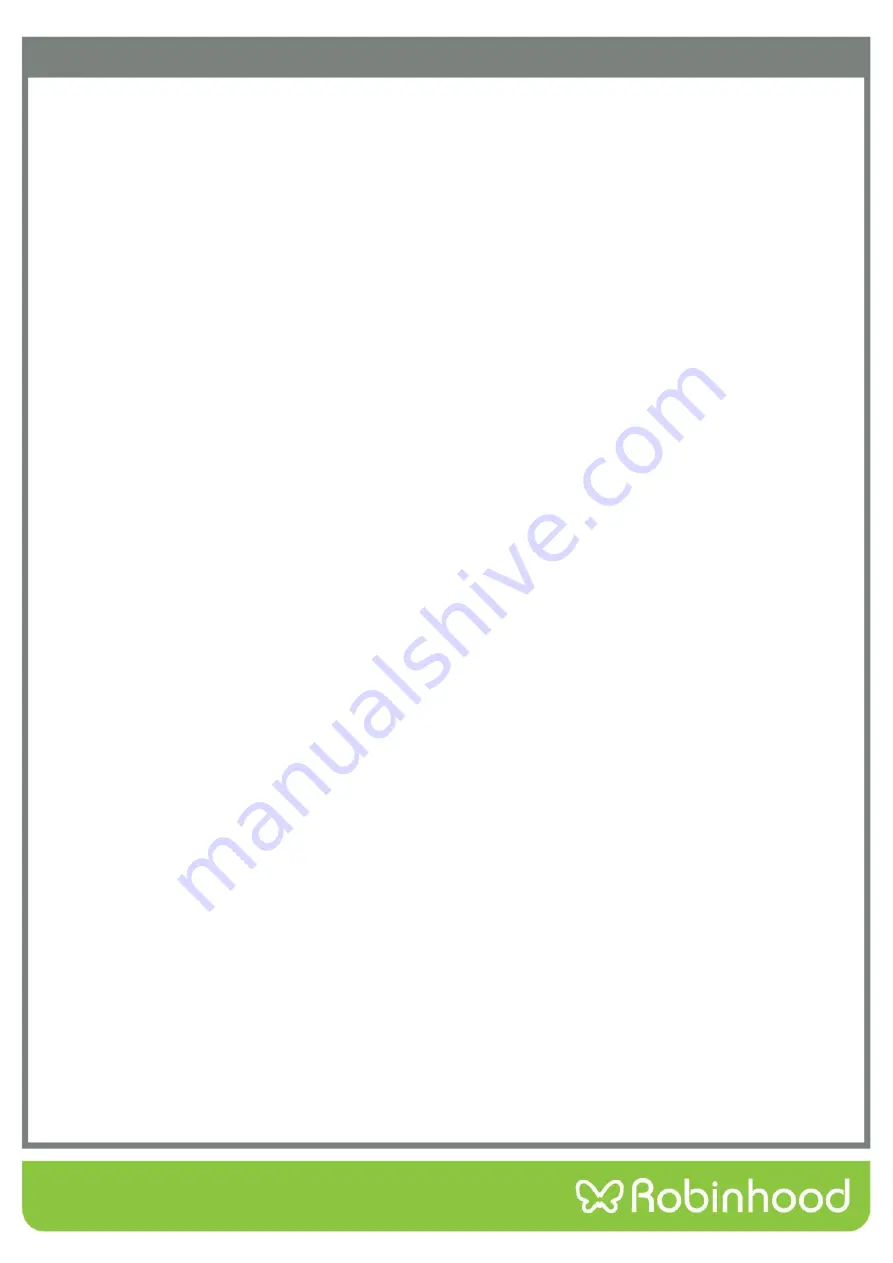
5
Care and Maintenance
Always ensure that the power supply is switched off prior to conducting any maintenance or cleaning of the
appliance.
If you leave your appliance out of use for an extended period, leave the lid open to prevent odours and unpleasant
smells building up inside.
Defrosting of the Freezer
The appliance should be defrosted once the thickness of ice on the walls reaches 5-6 mm.
Do not use any electrical, sharp or mechanical objects to assist in the defrosting process, unless supplied or
approved by manufacturer or approved service centre. To remove ice from the inner walls, use a plastic or wood
scraper without sharp edges. Never use a metal scraper.
Proceed as follows:
1.
Make sure to unplug the appliance.
2.
Dry your hands thoroughly to prevent skin damage by contact with ice (it is advised to use gloves).
3.
Remove EVERYTHING from the appliance and ensure it does NOT DEFROST!
4.
Pull out the water drain plug (if available) located at the bottom of the appliance. Otherwise, you must wipe
up the melt water at the bottom of the appliance compartment with a sponge or towel.
5.
Scrape the ice carefully from the inner of appliance and dispose of it appropriately (kitchen sink/bath/toilet).
6.
Thoroughly clean the inside of the appliance compartment, rinse it with warm water and remove any spilt
food or liquids.
7.
Wipe the appliance with an absorbent cloth or sponge thoroughly dry and allow to air dry.
8.
Replace the drain-plug (if available).
9.
Close the lid and plug the appliance into the power socket.
10.
Wait till the temperature comes down before placing food back into the freezer.
To prevent frozen food from defrosting, carry out the defrosting procedure within a maximum of two hours to
reduce significant rise in temperature of the frozen food that would shorten the storage life.
Climate class:
•
Extended temperate(SN): 'this refrigerating appliance is intended to be used at ambient temperatures
ranging from 10°C to 32 °C.
•
Temperate(N): 'this refrigerating appliance is intended to be used at ambient temperatures ranging from 16
°C to 32 °C.
•
Subtropical(ST): 'this refrigerating appliance is intended to be used at ambient temperatures ranging from
16°C to 38 °C.
•
Tropical(T): 'this refrigerating appliance is intended to be used at ambient temperatures ranging from 16 °C
to 43 °C.
Cleaning the Appliance
•
Upon installation of your new appliance, it is recommended that it be cleaned thoroughly, and cleaned once
a month after that.
•
To clean the appliance, first turn the thermostat to MIN, turn off the power, unplug from the power socket
and remove all food and shelving.
•
Wash the inside with a damp warm cloth containing a water and baking soda solution. The solution should
be about 2 tablespoons of baking soda to a quart of water.
•
Wash the shelving with a mild detergent solution.
•
Be sure to keep the door gasket (seal) clean to keep the unit running efficiently.
•
The outside of the appliance should be cleaned with mild detergent and warm water. Dry the interior and
exterior with a soft cloth.
•
It is recommended that the unit be cleaned each time it is defrosted to help keep the unit odour free and
running efficiently.
•
Do not use oils, abrasive cleaners, petroleum products, acids or alkaline detergents, as they can damage the
appliance.

